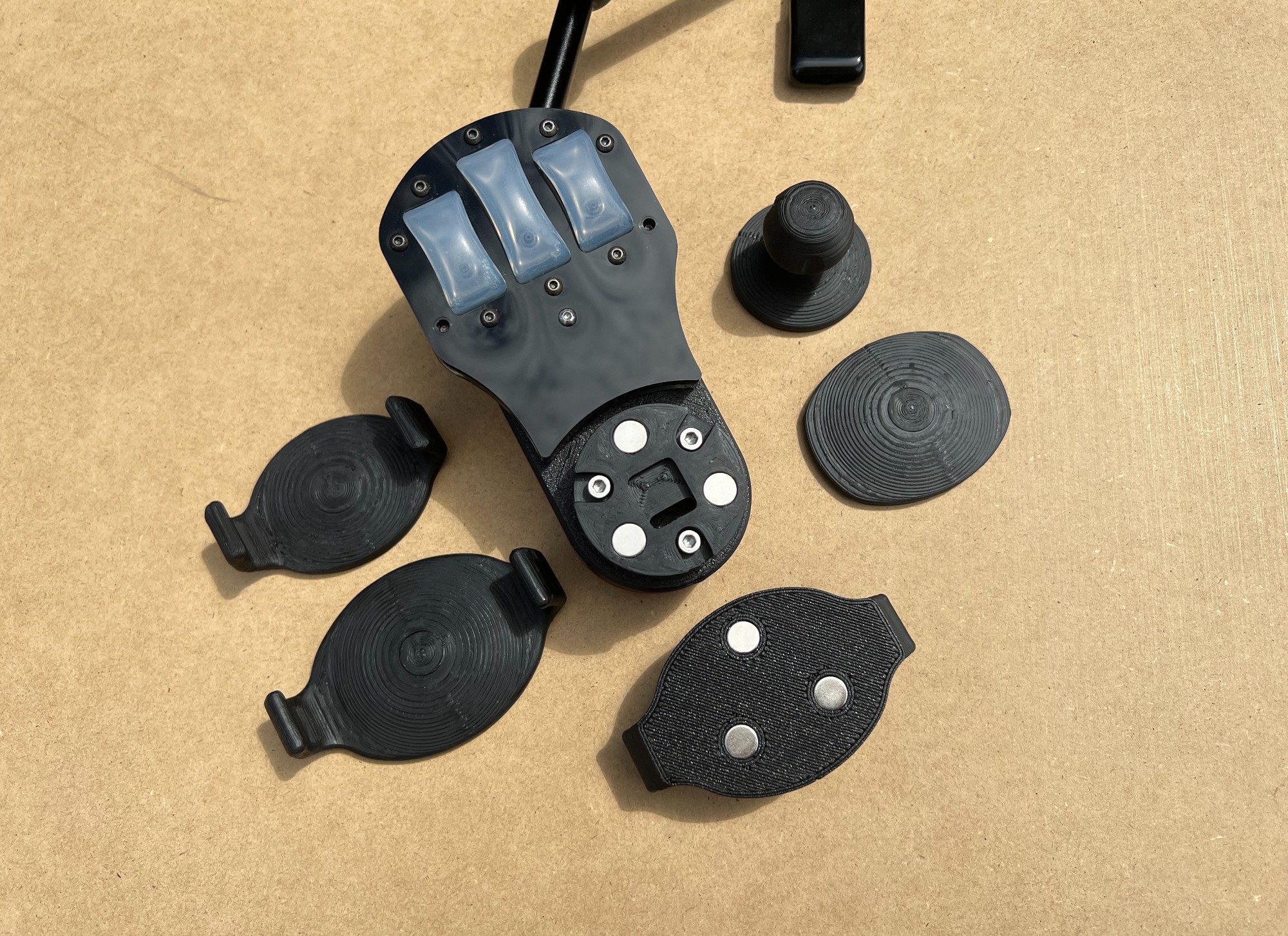
I'm excited to provide a project update that highlights the modular, swappable grips for the OHMni-Stick. This addition allows for easy interchangeability of grips based on the user's abilities and preferences, offering a personalized and adaptable experience. Let's explore the reasoning behind this design and the advantages it brings:
The primary motivation for incorporating modular, swappable grips is to cater to the diverse needs of users with varying abilities. By providing multiple grip options, the OHMni-Stick becomes more inclusive and versatile, accommodating individuals with different levels of dexterity, muscle strength, and comfort requirements. Users can simply swap out grips based on their specific needs, ensuring a customized and ergonomic interface.
The grip-swapping mechanism relies on three powerful magnets that securely hold the grip onto a "push-plate." These magnets are carefully chosen to ensure a robust attachment during normal use. However, they are also designed to reliably detach the grip in the event of an impact, muscle spasm, or any other sudden force that exceeds the maximum rating of the load cells. This safety feature prevents any potential harm to the user or damage to the device.
The advantages of the modular, swappable grip system are significant. First and foremost, it allows users to tailor the OHMni-Stick to their individual needs and abilities, promoting a sense of control and empowerment. Whether someone prefers a more traditional power chair-style grip, a puck-shaped grip for easy palm control, or a "saddle-style" grip that helps securely hold the user's hand in position, the OHMni-Stick can accommodate their preference. This modularity also allows for future expansion and innovation, as new grip designs can be developed and integrated into the system, keeping the OHMni-Stick up to date with evolving user needs and technology advancements.
 oneohm
oneohm
Discussions
Become a Hackaday.io Member
Create an account to leave a comment. Already have an account? Log In.